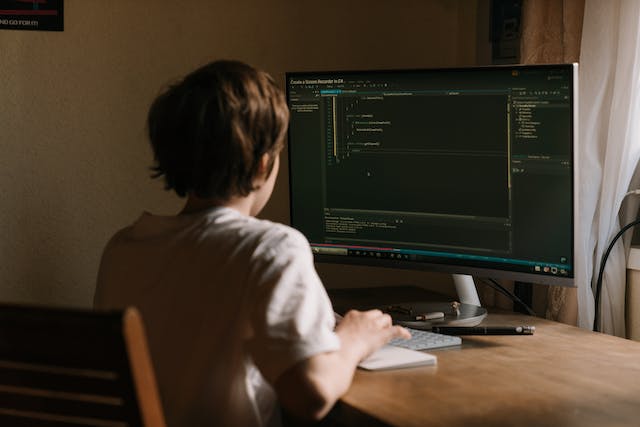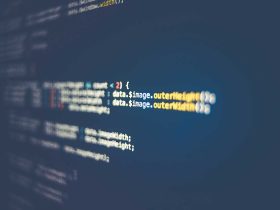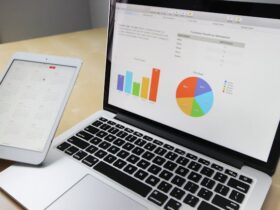Future of Cybersecurity
Over the years, businesses and organizations of all types and sizes have lost billions of dollars in data theft, security breaches, ransomware, insider threats, and denial of service, averaging a whopping $400 billion a year.
Although technology has become a pillar for all organizations, regardless of their industry, the same technology empowers cybercriminals to defy all odds and disrupt the security landscape. With every passing day, cybercriminals are getting more sophisticated in their approach and inventing new mechanisms to steal sensitive corporate data, fabricate valuable information, disrupt business operations, and take advantage of vulnerabilities in networks and applications to gain unauthorized access.
In a parallel world, developments in data and network security using AI-powered algorithms, powerful machine learning tools, and novel security systems have increased, with more and more organizations employing cutting-edge tools to cater to their growing security needs. This widescale change in technological architecture also indicates a parallel shift in future cybersecurity trends. In this article, we’ll shed light on the future of cybersecurity and various trends in this expansive field as both organizations and cybercriminals take advantage of the latest technological developments.
Cybersecurity Trend #1 – Preemptive Cybersecurity Measures Continue to Mitigate Risks
From dealing with active security threats to a complete transformation toward building strong defenses – the trend of employing preemptive cybersecurity measures has been the most successful cybersecurity strategy for organizations worldwide, and it’s here to stay. Instead of outsourcing data and network security, organizations now prioritize building a professional cybersecurity team comprising cybersecurity specialists, network engineers, business analysts, and IT experts.
Cybersecurity experts are highly skilled and qualified individuals who undergo extensive cybersecurity training when pursuing their masters in cybersecurity online or on campus. They’re well-versed in creating strict security protocols for organizations, implementing security policies, ensuring compliance with industry-specific data security regulations, ethical hacking, data encryption, and much more. Their in-depth knowledge and expertise help organizations identify vulnerabilities in their IT infrastructure, business applications, and access controls.
Preemptive cybersecurity measures include a variety of tests, namely:
- Network and application penetration testing
- Ethical hacking
- Black-box testing
- White-box testing
- Gray-box testing
- Web and network vulnerability scanning
- Intrusion detection tools
- Continuous network traffic monitoring
- AI-Powered tools to detect unauthorized access from within or outside network or cloud systems
Cybersecurity Trend #2 – The Use of AI and ML is More Pronounced
The permeation of artificial intelligence (AI) and machine learning (ML) technology into data security tools is one of the most important trends shaping the future of cybersecurity. Powerful AI and ML algorithms can scan massive volumes of data simultaneously and detect any abnormalities that might suggest a possible threat. Machine learning techniques use predictive analytics to analyze heaps of data and forecast future cybersecurity risks.
Moreover, machine learning allows cybersecurity experts to train intrusion detection and vulnerability scanning tools on novel security threats, eliminating the need to continuously upgrade existing security systems for all-out protection against new virus specimens and threat domains. On top of that, machine learning capability allows cybersecurity solutions to automate repetitive tasks and free up cybersecurity personnel to focus on more complicated issues.
AI-powered tools loaded with ML and natural language processing capabilities can promptly detect active and passive attacks, identify patterns to detect abnormal network activity from known or unknown sources and respond proactively to cyberattacks to mitigate their effects and prevent or minimize damage.
Cybersecurity Trend # 3 – Cybercriminals Show Up the Dark Side of AI and ML
On the negative side, AI will drive innovation in cybercrime. The same technology that has the potential to outsmart hackers can be used to turn down state-of-the-art security systems. Cybercriminals can use AI, ML, and data analytics to analyze network traffic, disguise malicious activities as genuine connection requests from authentic sources, and use sophisticated malware to circumvent fool-proof security mechanisms. As for now, no potent tools have been developed to monitor the development of AI, ML, and other technology-based systems to ensure their security and responsible use.
Cybersecurity Trend # 4 – Cloud Networks Are the Top Target
With more and more enterprises moving to the cloud, cybercriminals are expected to target cloud networking more frequently than ever before. Statistics show a staggering 48% increase in cyberattacks on cloud networks during 2022.
The rising dependency of businesses on cloud computing has resulted in new and more complex security concerns for cybersecurity specialists and corporations. Although cloud computing has made it easier for businesses to maintain networks, store or process data, and outsource data and network security, the fact that sensitive data is hosted on remote computers has rendered it more vulnerable to cyberattacks.
The potential exposure of sensitive information and the lingering danger of unwanted access are among the most serious security issues with cloud-based applications, network and security services, and data-as-a-service (DaaS). Innovations in cybercrimes now enable cybercriminals to breach the cloud service provider’s remote servers irrespective of their distributed approach or gain unauthorized access through hacked login credentials. Organizations and cloud service providers need to employ the latest data encryption techniques and strict access controls to counter these potential risks. Moreover, firms must adopt a no-trust policy and ensure the cloud service providers adhere to compliance and are conscious of the legal implications of intentional or unintentional data leaks, security breaches, and non-compliance with industry-specific protocols like PCI-DSS and HIPAA.
Cybersecurity Trend #5 – Quantum Cryptography is the Future of Cybersecurity
From conceptualization to practical implementation, quantum computing is rapidly taking over conventional systems due to its ability to do computations considerably faster. Consequently, cybersecurity has found its potential in quantum computing as it can analyze and process huge amounts of data within milliseconds. Quantum computers might be utilized to create new, more secure, and hard-to-break data encryption techniques, providing unparalleled levels of security for organizational data during transmission over the internet.
Quantum computing provides hackers significant advantages in breaking complex codes and solving complicated cryptographic problems that a normal computer might fail at deciphering. Moreover, hackers can use these remarkably fast machines to circumvent sophisticated cybersecurity systems and firewalls. More computing power means hackers will be better equipped to breach security layers of networks, steal or restrict access to sensitive organizational data, and cause collateral damage to businesses. If such cyberattacks are successful, they might have disastrous effects on communities, including huge economic upheaval, resulting in inflation, job losses, and increased cybercrimes.
Key Takeaways
While the existing threat landscape will continue to cause massive disruptions in the corporate ecosystems, the above future trends highlight both the positive and negative aspects of cutting-edge technology in cybersecurity. Organizations and businesses must keep themselves well-versed with these technologies and use them to strengthen their defenses against potential security breaches.






